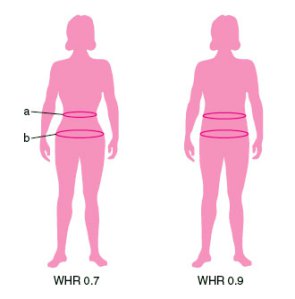|
Obesity Paradox
The obesity paradox is the finding in some studies of a lower mortality rate for overweight or obese people within certain subpopulations. The paradox has been observed in people with cardiovascular disease and cancer. Explanations for the paradox range from excess weight being protective to the statistical association being caused by methodological flaws such as confounding, detection bias, reverse causality, or selection bias. Description The terminology "reverse epidemiology" was first proposed by Kamyar Kalantar-Zadeh in the journal ''Kidney International'' in 2003 and in the ''Journal of the American College of Cardiology'' in 2004. It is a contradiction to prevailing medical concepts of prevention of atherosclerosis and cardiovascular disease; however, active prophylactic treatment of heart disease in otherwise healthy, asymptomatic people has been and is controversial in the medical community for several years. The mechanism responsible for this reversed association is ... [...More Info...] [...Related Items...] OR: [Wikipedia] [Google] [Baidu] |
Cardiovascular Disease
Cardiovascular disease (CVD) is a class of diseases that involve the heart or blood vessels. CVD includes coronary artery diseases (CAD) such as angina and myocardial infarction (commonly known as a heart attack). Other CVDs include stroke, heart failure, hypertensive heart disease, rheumatic heart disease, cardiomyopathy, abnormal heart rhythms, congenital heart disease, valvular heart disease, carditis, aortic aneurysms, peripheral artery disease, thromboembolic disease, and venous thrombosis. The underlying mechanisms vary depending on the disease. It is estimated that dietary risk factors are associated with 53% of CVD deaths. Coronary artery disease, stroke, and peripheral artery disease involve atherosclerosis. This may be caused by high blood pressure, smoking, diabetes mellitus, lack of exercise, obesity, high blood cholesterol, poor diet, excessive alcohol consumption, and poor sleep, among other things. High blood pressure is estimated to account for appro ... [...More Info...] [...Related Items...] OR: [Wikipedia] [Google] [Baidu] |
Nursing Home
A nursing home is a facility for the residential care of elderly or disabled people. Nursing homes may also be referred to as skilled nursing facility (SNF) or long-term care facilities. Often, these terms have slightly different meanings to indicate whether the institutions are public or private, and whether they provide mostly assisted living, or nursing care and emergency medical care. Nursing homes are used by people who do not need to be in a hospital, but cannot be cared for at home. The nursing home facility nurses have the responsibilities of caring for the patients' medical needs and also the responsibility of being in charge of other employees, depending on their ranks. Most nursing homes have nursing aides and skilled nurses on hand 24 hours a day. In the United States, while nearly 1 in 10 residents age 75 to 84 stays in a nursing home for five or more years, nearly 3 in 10 residents in that age group stay less than 100 days, the maximum duration covered by Medicare ... [...More Info...] [...Related Items...] OR: [Wikipedia] [Google] [Baidu] |
Waist To Hip Ratio
The waist is the part of the abdomen between the rib cage and hips. On people with slim bodies, the waist is the narrowest part of the torso. ''Waistline'' refers to the horizontal line where the waist is narrowest, or to the general appearance of the waist. Structure Because of this and because the waist is often synonymous with the stomach, one can become confused as to the exact location of the waist. Another confusing factor is that the waistline differs on different people. A study showed that self-reported measurements as opposed to measurement done by a technician, underestimated waist circumference and this underestimation increased with increased body size. In the study, waist circumference measured at the level of the umbilicus was larger than that measured at the natural waist. To locate the natural waistline, one need simply stand upright and then tilt over to the side keeping the legs and hips straight. Where the torso creases is the natural waistline. Waist me ... [...More Info...] [...Related Items...] OR: [Wikipedia] [Google] [Baidu] |

